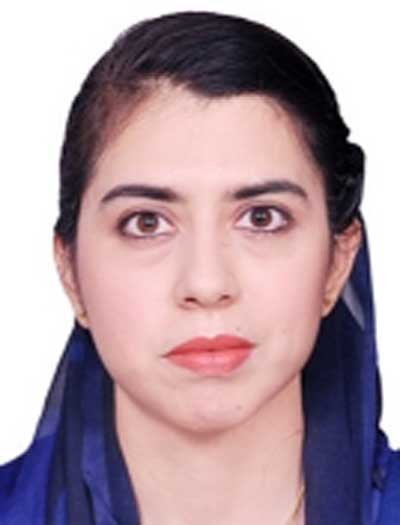
The rich history and heritage of Pakistan can be traced back millions of years. One of the oldest stone tools in the world, dating back to 2.2 million years, has been discovered in Rawat, approximately fifteen miles from Pakistan’s capital, Islamabad. Additionally, one of the largest hand axes was found in the nearby Soan River Valley.
Around 50,000 BC, the ancient inhabitants of Sanghao Cave in the Mardan District improved their technology for working with quartz to hunt animals in closed valleys. Later, they began using micro quartz, chert, and flint to produce arrows, knives, scrapers, and blades. They hunted fleeing deer and ibexes with bows and arrows. These hunting scenes are well illustrated in thousands of rock carvings, inscriptions, and various other sources dating from the Neolithic period in Gilgit-Baltistan.
The first settled life in Pakistan began around 7000 BC when the ancient village of Mehrgarh was discovered in the Sibi District of Balochistan. Mehrgarh is comparable to the earliest villages of Jericho in Palestine and Jarmo in Iraq. Excavations at Mehrgarh, which started in 1974, revealed various aspects of the settled social life of the ancient inhabitants of Pakistan. It was here that they first learned to use the land for agriculture and cultivated wheat and barley. They crafted painted pots, pans, jars, bowls, drinking glasses, dishes, and plates. They also began wearing beads and other ornaments as fashion.
By 6000 BC, they had learned to use bronze, which initiated a revolution in their social, cultural, and economic life.The early Bronze Age Indus Valley culture gradually expanded across the regions of Sindh, Balochistan, Punjab, Khyber Pakhtunkhwa, Gilgit-Baltistan, and Kashmir. This development led to the growth of small towns, such as Kot Diji (circa 3300 BC) in Sindh and Rehman Dheri (circa 4000 BC) in Dera Ismail Khan District. These social and cultural changes contributed to the rise of the prominent cities of Harappa and Mohenjodaro, which featured a large population of artisans, craftsmen, and merchants. The civilization that emerged was later identified as the Indus Valley Civilization.
The residents of ancient Pakistan constructed dams to store river water. Land was cultivated using bullock-harnessed plows, a method still used in some parts of Pakistan today. Granaries were established for food storage. With the onset of industrialization, they built furnaces to control temperatures for the bulk production of red pottery. They also crafted various ornaments and beads from carnelian, agate, and terracotta. This development marked the peak of the Indus Valley Civilization around 2500 BC. The civilization thrived on large-scale agricultural production and industrial manufacturing. The people engaged in overseas trade by land and sea with the Persian Empire (Iran), Gulf States, Mesopotamia (Iraq), Egypt, Afghanistan, and Central Asia.
The Indus Valley Civilization covered an area many times larger than both the Middle Kingdom of Egypt and the Third Dynasty of Ur in Mesopotamia, yet archaeological finds indicate it was remarkably homogeneous. City layouts, building construction, sewer systems, weights and measures, seal inscriptions, patterned pottery, figurines, and even the burnt bricks used in construction all display uniformity. The flood walls are consistently uniform across all Indus Valley cities and towns, suggesting an integrated economic system and effective internal communication.
The culture of the Indus Valley Civilization remained remarkably stable over time. Since the main cities and towns were located in river lowlands prone to flooding, they were frequently rebuilt, with each reconstruction closely mirroring the previous design. Similarly, the Indus script, known from thousands of stamp seals and using both pictographic and phonetic symbols, shows no evidence of change over time. This stability, regularity, and adherence to tradition have led scholars to speculate that a centralized and stable government governed this extensive societal entity.
Unfortunately, the language of the Indus Valley Civilization remains undeciphered. Little is known about the religion practiced during that era. No temples or idols have been recovered from any of the Indus Valley Civilization’s sites. For reasons still not fully understood, the civilization gradually declined after 1900 BC. Following the decline of the Indus Valley Civilization, people in various regions gradually returned to their old cultures and religious practices. Later, Buddhism emerged as the first major populist religion in the Indus Valley. After the introduction of Islam in 712 AD, it gradually became the predominant faith and is now followed by over 90 percent of Pakistanis.
The Mesopotamians referred to ancient Pakistan as Meluhha. The ancient Persians called it Hind, which derived from the name of the Sindh River. Since the ancient Persian language (Avestan) did not include the letter “S,” it was replaced with “H,” resulting in Hind instead of Sindh. The Arabs later called it Al-Hind. The Ionian Greeks identified it as Indoi/Indos (the land and people of the Sindh/Indus River), and much later, in Latin, it became India. In 1947, the region’s people chose the name Pakistan.
In contrast to the evidence of warfare found in other contemporary civilizations like Egypt and Mesopotamia, archaeologists have not discovered any warlike materials at the sites of the Indus Valley Civilization. The people of the Indus Valley Civilization were remarkably peaceful and sanguine in nature, yet they possessed the strength to bravely resist foreign interventions, even during the decline of their civilization, when foreign powers invaded a presumably weak entity.
Historically, the landmass of Pakistan has been invaded from both the east and the west. However, in over 9000 years of known history, Pakistan and the modern Republic of India have been politically unified for only about 200 years – approximately 100 years under the Mauryan Empire and a similar duration under British colonial rule. The subcontinent was ruled by Muslims for around 500 years. For the remaining over 8000 years, the current geographical area of Pakistan remained a distinct entity.




